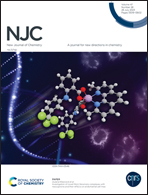Structural features and in vitro antitumor activity of a water-extracted polysaccharide from Ganoderma applanatum†
Abstract
Polysaccharides from Ganoderma applanatum have attracted much attention due to their excellent pharmacological activities. In this work, a new water-soluble polysaccharide (GAP-2) was extracted and isolated from the fruiting bodies of Ganoderma applanatum. GAP-2 (21.3 kDa) was mainly composed of glucose (82.0%) and was spherical in aqueous solutions with a particle size distribution between 10 and 100 nm. Methylation analysis and nuclear magnetic resonance (NMR) results showed that the backbone structure of GAP-2 was →4)-α-D-Glcp-(1→ [3,6)-β-D-Glcp-(1]8→4)-α-D-Glcp-(1→6)-α-D-Glcp-(1→, and the branch was β-D-Glcp-(1→. Furthermore, the cell experiments indicated that GAP-2 could inhibit the proliferation and induce apoptosis of a variety of cancer cells (A549, SKOV3, and SMMC-7721) in a concentration-dependent manner, and significantly prevent the migration of A549 cells. In particular, GAP-2 hardly affected normal cells at experimental concentrations. Taken together, GAP-2 has inhibitory effects on tumor cells and has the potential to be a functional agent or an antitumor adjuvant.



 Please wait while we load your content...
Please wait while we load your content...